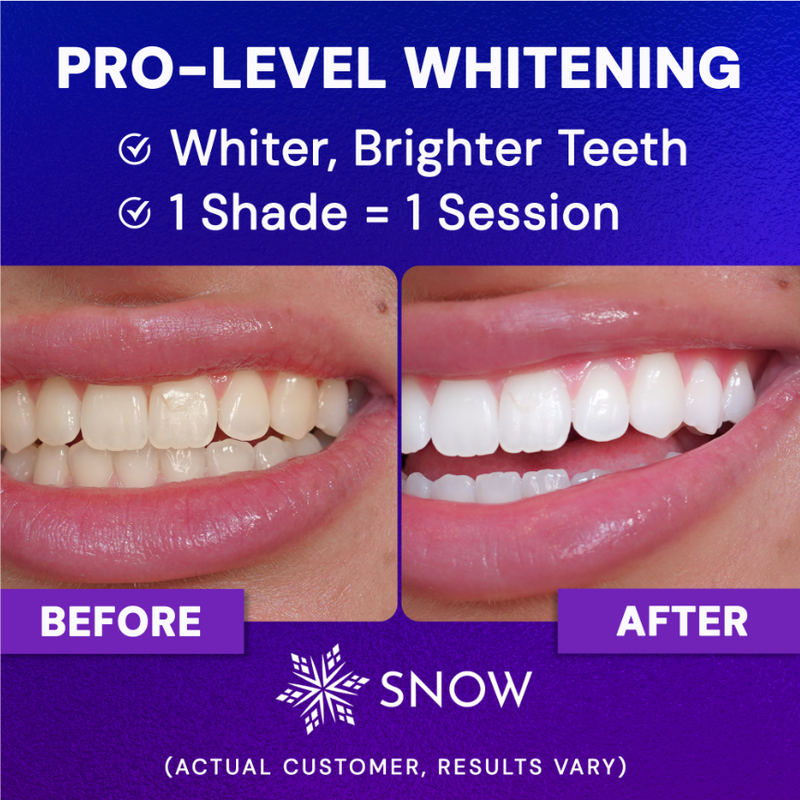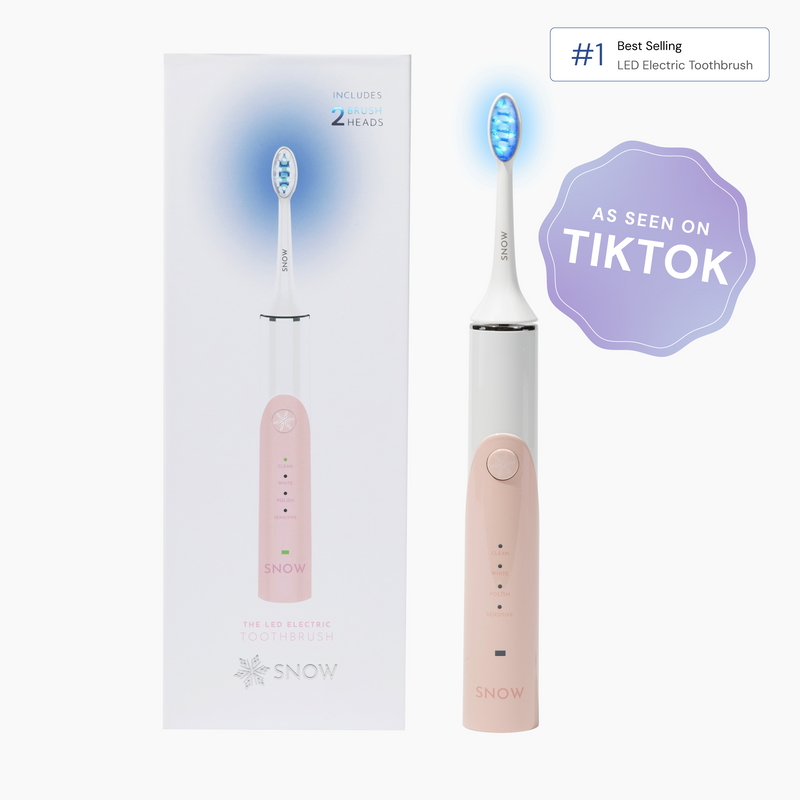A gingivectomy is a dental procedure where a dentist or periodontist removes excess gum tissue from around your teeth.
A gingivectomy can be used for cosmetic reasons, to treat periodontal disease, or prepare a tooth for restorative treatments like a crown.
Depending on the type of gingivectomy technique your dentist is using, it may involve a laser or more surgical removal, requiring a slightly longer healing process.
Why Remove Gingival Tissue?
Sometimes teeth look misshaped or short because of the shape of the gum tissue around them. Adjusting diseased gum tissue or using a soft tissue laser to perform a gingivectomy can provide numerous dental benefits. Here are three common reasons why your dentist may recommend gum reshaping:
Cosmetic Reasons
A cosmetic gingivectomy is done to reduce the appearance of a "gummy" smile or uneven gum tissue around your teeth. Because uneven gums or gummy smiles can cause teeth to look short or misshapen, your dentist may want to perform a gingivectomy for aesthetic purposes.
During the gingivectomy procedure, your dentist will reshape the margins of the gums, reframing your teeth to reveal fuller, more symmetrical teeth whenever you smile.
Symmetrical gum tissue is a key element of an attractive smile. But most people don't think about having a gingivectomy during their smile makeover. This elective cosmetic treatment option can significantly enhance the overall results of treatments like dental veneers, teeth whitening, bonding, tooth recontouring, and other aesthetic procedures.
Gingival enlargement from medications or hormones may be one reason why someone wants to have major gum removal because of the way it affects their smile's appearance.
Due To Periodontal Disease
If you have or previously had advanced periodontal disease, there are pockets around each tooth. Pockets are the spaces between your gums and teeth where bacteria can collect and cause inflammation or recurring infection, triggering bone and tooth loss.
Your dentist may want to perform a type of gingivectomy surgery known as "pocket reduction." This treatment option reduces the height of the gum tissue around the teeth, shortening the depth of the periodontal pocket.
With shorter pockets, it's easier to clean around the teeth with floss and a toothbrush, reducing your chances of recurring periodontal infections.
Restorative Dental Procedures
"Crown lengthening" is a type of gingivectomy surgery where the tooth above the gum tissue is lengthened by reducing the level of the gum line. This exposes a larger surface area of the tooth so that other dental procedures, such as a dental crown, can be performed.
Crown lengthening gingivectomy surgery is a technique to avoid removing the tooth, as it allows your dentist to place a fixed restoration on a significantly worn or fractured tooth.

Types of Gingivectomy Procedures
There are two common types of gingivectomy surgery techniques that dentists will use. Depending on the resources available to your dentist, which technology they have on hand, and their training, it will either be a soft tissue laser gingivectomy or a surgical gingivectomy performed by physically cutting or trimming the gums.
Laser Gingivectomy
A soft tissue laser can be used to perform a gingivectomy instead of using a scalpel. During the procedure, the laser emits a focused beam of light energy that precisely and accurately removes the excess tissue while minimizing bleeding and damage to surrounding healthy tissue.
After the procedure, patients can expect some mild discomfort and swelling, but overall healing times are typically faster than with traditional surgical methods. Additionally, laser treatment can reduce the need for sutures, decrease the risk of infection, and result in less post-operative pain and bleeding.
In short, laser treatment can provide a more comfortable and faster healing experience for gingivectomy patients.
Traditional Surgical Gingivectomy
A conventional gingivectomy or gum reshaping procedure is usually done with a scalpel by physically trimming the gingiva.
Because of the surgical technique used, this method may require stitches to close the wound as well as a medicated surgical dressing over the surgical site.
After the procedure, the area will be swollen and sore for a few days, and it may take a few weeks for the gums to heal completely.
Scalpel gingivectomy treatments are still used today, but they are less common now that laser technology is available.
What to Expect During Your Procedure
For traditional periodontal surgery like crown lengthening, your dentist will use numbing gel and local anesthetic to numb the gum tissues around your teeth. The local anesthesia will last for at least a few hours, even though the procedure itself usually only takes about an hour to complete.
If you are having cosmetic treatment for a gummy smile, your dentist may not need to use local anesthetic at all. Since laser gingivectomy techniques are minimally invasive, you can expect little to no irritation during the appointment.
Recovery After Your Gingivectomy
The home care process and recovery after a gingivectomy procedure typically involve the following steps:
1. Bite down gently on the gauze placed over the surgical area to reduce bleeding.
2. Apply an ice pack to the outside of your face near the surgical area for 15-20 minutes at a time to help reduce swelling.
3. Keep your head elevated to reduce swelling and bleeding.
4. Avoid rinsing, spitting, or using straws for the first 24 hours after the procedure.
5. Brush your teeth gently, avoiding the surgical area for the first few days.
6. Use an antiseptic mouthwash as directed by your dentist.
7. Take any prescribed antibiotics or pain medication as directed.
8. Eat soft foods and avoid hot or spicy foods for the first few days.
9. Follow up with your dentist as scheduled, especially if there is a surgical dressing that needs to be removed.
Recovery time after a gingivectomy procedure can vary depending on the extent of the surgery, but most patients can expect to fully recover within 7-14 days.
In the first days after surgery, patients can expect some mild discomfort and swelling, but this should subside within a few days.
It is important to follow the post-operative instructions from the dentist to ensure proper healing and prevent infection. Most people can expect to be able to return to their normal activities within a week.
If your gum condition is being treated with a laser, you can usually expect to feel back to normal within a day or two. The laser speeds up the healing process, resulting in little to no redness or bleeding.
FAQs
Will insurance pay for an elective gingivectomy?
Gingival overgrowth or gummy smiles may only pose a cosmetic concern rather than a health issue. As such, elective gingivectomy procedures may not be covered by your insurance plan.
Will a gingivectomy improve my periodontal health?
Pocket reduction, in addition to periodontal disease treatment, can help manage the health of tissues inside deep pockets, preserving the bone tissue around the teeth.
Should I use antibacterial mouthwash after gum surgery?
Special rinses that are medicated may be prescribed by your dentist. Otherwise, saline and special rinses like antibacterial mouthwash are recommended.
Will a gingivectomy treat gum disease?
If you have advanced gum disease, you may need a gingivectomy in addition to periodontal surgery.
Do I Need a Gingivectomy Performed?
If you have chronic gum disease, a gummy smile, or short teeth that require restorative treatment, your dentist may recommend adjusting the remaining tissue around the teeth to improve your oral health and appearance.





































































